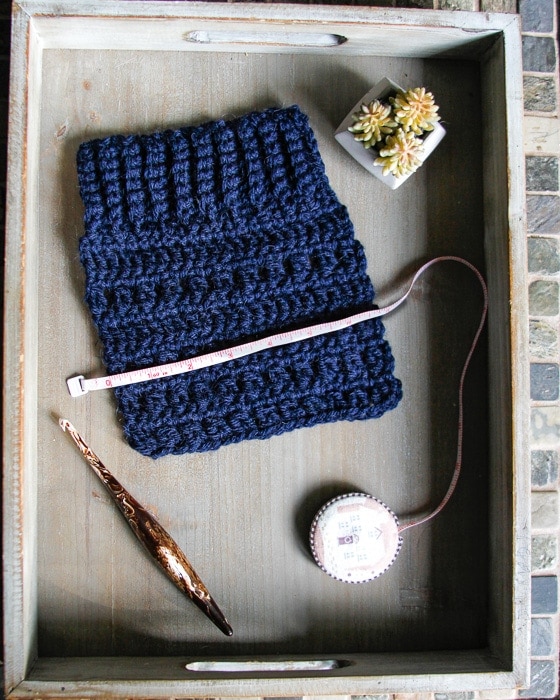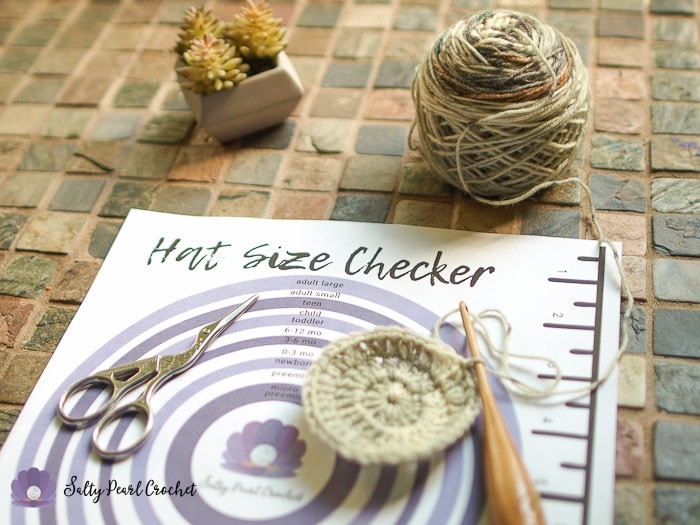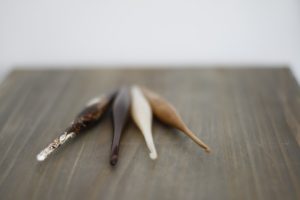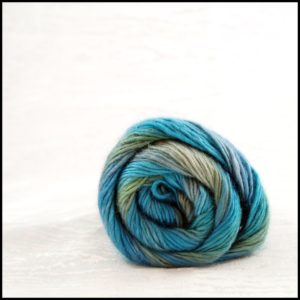This post may contain affiliate links. For more details, see my disclosure page.
I have a complicated relationship with crochet gauge and gauge swatches. As a creative soul, it’s hard to feel inspired by making a 6″ square, when really, I want to wear this gorgeous crochet sweater, like, yesterday.
So usually I skip it. And instead, I follow my crochet pattern exactly. I crochet carefully, so I don’t miss a single stitch, I’m totally positive I won’t make a single mistake, and I even use the exact same (crazy expensive and hard to find) European yarn the pattern recommends.
But the pattern still doesn’t come out right. Meanwhile, I am getting so frustrated I could scream, or pull my hair out in a fit of rage. I’m even starting to think about throwing the whole project away. But I won’t. Because, hello, expensive yarn.
Sound familiar? If you’ve ever crocheted a piece that didn’t come out how you’ve envisioned, even if you did everything right, this article will teach you how to solve your crochet gauge problems for good, so you can go on making those gorgeous hats and sweaters and blankets you’re dreaming of. Without pulling out all your hair first.

What is Gauge in Crochet?
Simply put, gauge is the measurement of how many stitches and rows there are in a predetermined area of crochet fabric. Usually, it has it’s own nice little subheading in a crochet pattern that looks a bit like this:
Gauge
14 stitches and 18 rows in 4″ square in single crochet.
If you’re anything like me, this seems like superfluous information. Ok, we’re using that stitch. Got it. Can we please get started already?
But matching (or NOT matching) the gauge listed in a crochet pattern can drastically affect the look, feel, size, and shape of your crochet projects. So if you like hats that fit their intended recipient, shawls that have a luxurious drape to them, and sweaters that, well, actually fit, you’ve got to learn about crochet gauge.
How Does Crochet Gauge Affect Your Finished Crochet Project?
To put it bluntly, gauge affects your entire piece by determining its finished proportions. If your gauge matches that of the designer’s, your piece will measure spot on, and your piece will look every bit as fabulous and amazing as it does in the photos.
But when your gauge is off, your finished item could come out looking, well, wonky. If there are more stitches in your gauge swatch than recommended, but you follow a pattern to the letter, your adult sized hat might fit your youngest nephew. (Been there. Made a Hat Size Checker to prove it.)

Related: How to crochet the right size hat with the flat circle method
You’ll also have a fabric that drapes similarly if you match gauge. That prevents you from making garments that are too stiff to wear comfortably, or amigurumi that are too floppy to hold their cute shapes.
If you have fewer stitches and rows per inch in your gauge, that adorably oversized sweater you’re making might end up looking more like a paper bag- that is to say, WAY bigger than you anticipated.
The worst part of it is, you might match the designer’s gauge on the width, but have shorter rows, due to your unique tension and crochet hook grip.
So How Do You Fix Your Crochet Gauge?
There are a few things to try editing to fix your crochet gauge: your hook size, your yarn weight, your familiarity with the stitch/pattern, and your tension and stitching habits. We’ll go over each one to help you figure out how each can troubleshoot a different type of gauge.
How Crochet Hook Sizes Affect Gauge
Every crochet hook has a size designation. In the US, we use both an alphanumeric label, and a millimeter measurement of the diameter of the hook shaft.
Why is that important? Your crochet hook creates a slight space between your yarn strands as you crochet. If you use a hook with a larger diameter, you’ll create slightly more space. But a smaller hook size will create less space.
Those spaces, combined with the weight of your yarn, dictate the size of your stitches, and therefore, determine your gauge- the number of stitches and rows per inch (or inches).

How to troubleshoot gauge by changing your crochet hook size:
If your gauge swatch is smaller than desired, or has more stitches and rows per inch than the designer’s sample, you’ll need to increase your hook size.
Vice versa, decreasing hook size can fix a gauge swatch that is bigger than desired, or has fewer stitches and rows per inch than listed in the crochet pattern.
How Yarn Weight Affects Gauge in Crochet
If you’ve learned to read crochet patterns, you’ll probably already know the difference between different weights of yarn. This is always listed in good crochet patterns, because if you try to make a hat designed in worsted weight with fingering weight yarn, you’ll get wildly different results.
Yarn weight, though, isn’t just a black and white sliding scale. Even within the broad categories of yarn weights there can be big variations. We’ll pick on Worsted [4] weights, because they’re most common.
Two of my favorite 4 weight yarns are Lion Brand Pound of Love and Lion Brand Vanna’s Choice. Both are Worsted [4] weight yarns, and both labels recommend a J/6.0 mm crochet hook work with.
But look closer, and you’ll notice there are approximate gauge suggestions, and they’re really different! Pound of Love has 14 stitches and 18 rows in 4 inches, while Vanna’s Choice has only 12 stitches, and 15 rows.
This information tells us that while they’re in the same general category, Pound of Love is ever so slightly thinner than Vanna’s Choice. So if you’re substituting one for the other, you’ll need to make adjustments to reach the correct size.
How to adjust gauge using yarn weight:
If your yarn is thinner than the yarn suggested in the pattern, you might consider going up a hook size or two as needed to match gauge.
If your yarn is thicker than the suggested yarn, a smaller hook might help you meet the gauge in your crochet pattern.
Why Does My Gauge Change as I Learn a Crochet Pattern?
Another factor in your gauge is your familiarity with the crochet pattern, and how comfortable you are with the techniques and stitches required.
Personally, I’ve had lots of funky gauge issues because I start off with a pattern that’s outside my comfort zone, and tense up slightly as I channel all my focus into completing a row correctly. Then, as I learn the techniques and get more comfortable, I relax, and my tension grows- sometimes dramatically. It’s frustrating!
What’s the best way to get comfortable with a new crochet pattern, stitch, or technique?
Two words: Gauge Swatch. If you have this problem, it can be really helpful for you to actually make a gauge swatch. That way, you can learn and practice the techniques on a small scale, instead of finding out halfway through a blanket that it’s going to be way off.
How Does Tension Affect Crochet Gauge?
Your tension comes from several different habits, and can be the hardest to change. That’s why I saved it for last.
However, this can be the only fix for gauge swatches that meet one dimension but not the other- for example when you have the same stitches in width as a designer, but more or fewer rows.
How to compensate for tension:
If you keep a very tight tension on your yarn, your stitches will contract slightly around your crochet hook. Often, this can be remedied by using a larger sized crochet hook than called for in the pattern.
The opposite is true for looser tensions. Go for a smaller hook if your tension is very flowing and loose, and you’ll find your stitches even up and get a little tighter.
If you find this still doesn’t fix it, consider using another method to hold and tension your yarn.
How Does My Stitch Technique Affect My Gauge?
If you have trouble meeting the row height, your stitching habits might be the reason. Here’s how that happens:
Tugging down on the working yarn after drawing up a loop in a stitch compresses your row height. Likewise, yanking on the working thread after completing a stitch makes stitches narrower. That affects the final width of your stitch.
Some crocheters instead lift with their hook after finishing a stitch. That makes for wider stitches. Lifting the working yarn after pulling up a loop in the stitch can also increase your row height.
How to compensate for lifting and tugging habits:
Practice, and be aware of your habits. Notice as you crochet whether you tend to lift your hook after a stitch, or if you habitually tug your working yarn.
Once you have figured out which habit is affecting you, focus on changing it. Making a gauge swatch is a perfect way to practice.

How to Fix Crochet Gauge Problems
Problem: Too many stitches and rows in swatch. Swatch is too small.
Your gauge is too tight.
Possible solutions:
- Increase hook size.
- Use slightly heavier yarn weight.
- Loosen your tension.
Problem: Not enough stitches or rows in swatch. Swatch is too big.
Your gauge is too loose.
Possible solutions:
- Decrease hook size.
- Use slightly lighter yarn weight.
- Tighten your tension.
Problem: My width is right, but I have too many rows.
Possible solutions:
- Check that you aren’t tugging your working yarn during the stitch.
- Check that you’re using the correct weight of yarn.
Problem: My swatch is the right size, but doesn’t have enough rows.
Possible solutions:
- Check whether you are lifting your working yarn during your stitches.
- Check whether your yarn weight is correct.



![How to fix error 0xc000000e windows 10 2022 100 SOLVED 11 How to fix error 0xc000000e windows 10 2022: [100% SOLVED]](https://dreamcheeky.com/wp-content/uploads/2022/06/How-to-fix-error-0xc000000e-windows-10-2022-100-SOLVED.jpg)
![how to fix Error code 0xc0000001 2022 100 FIXED 12 how to fix Error code 0xc0000001 2022 :[100% FIXED]](https://dreamcheeky.com/wp-content/uploads/2022/06/how-to-fix-Error-code-0xc0000001-2022-100-FIXED.jpg)